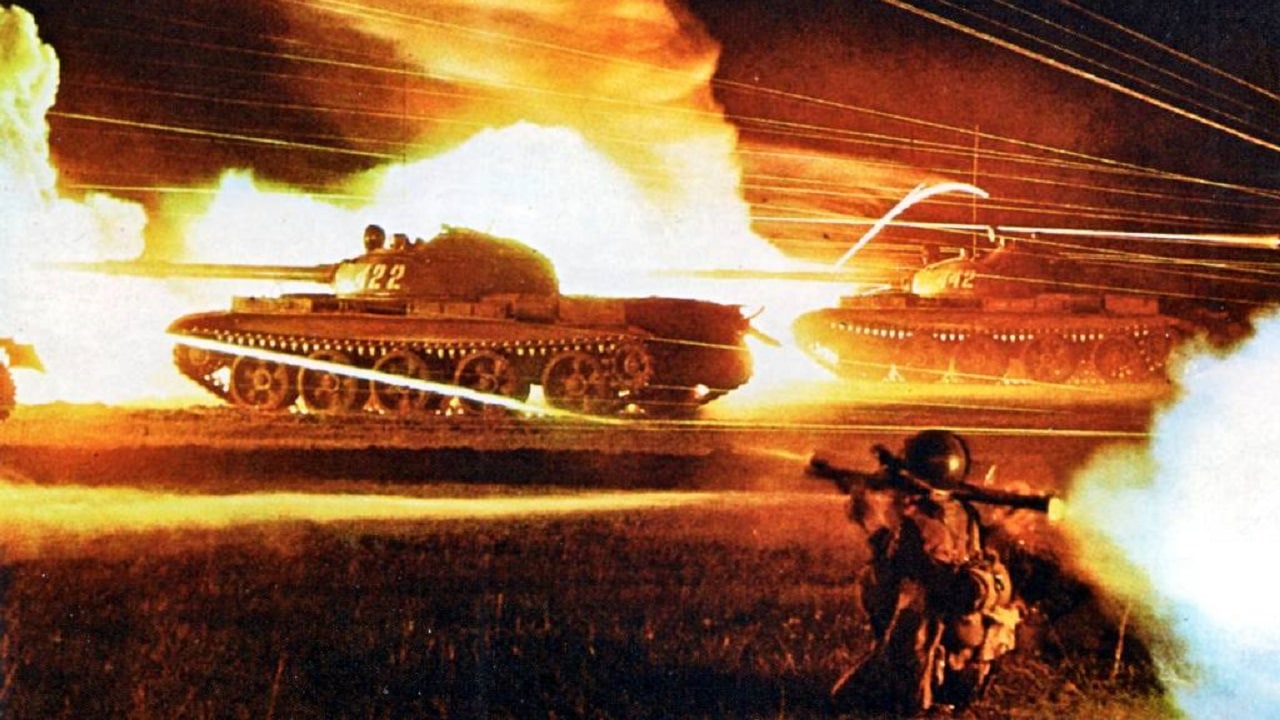Moscow has resurrected its old fleet of Soviet-era T-62 tanks to help with its invasion of Ukraine.
Last month, a video depicting dozens of retired T-62s being delivered to the occupied city of Melitopol by train circulated widely on social media. Since the onset of the war in February, Russian forces have lost more than 700 of their most advanced tanks, including tanks from Russia’s fleet of T-72s, T-80s, and T-90s. To compensate for these heavy losses, Russia is turning to its aging and extremely vulnerable fleet of older platforms.
The T-62’s inadequacies, however, will probably only exacerbate Moscow’s failures on the ground.
Back to the 60s
The United Kingdom’s Ministry of Defense confirmed the visual depictions of Russia’s T-62 tanks traveling through Ukraine. The ministry elaborated that the fleet was being moved from deep storage to support the Southern Grouping of Forces in combat. Additionally, British intelligence claimed that the old fleet of tanks would be especially susceptible to anti-tank weaponry.
“As a result of losses during hostilities, the Russian enemy was forced to withdraw from storage T-62 tanks to recruit reserve battalion tactical groups that are being formed to be sent to Ukraine. In addition, equipment that was damaged and restored at repair and renovation plant is used to replenish the loss of weapons and military equipment,” the ministry noted.
The T-62 is a second-generation main battle tank that was first introduced in 1961. Meant to replace the country’s older T-55 model, it became the standard tank in the Soviet arsenal. Its enhancements included a U-5TS 115mm main gun and a 7.62mm PK-T machine gun that was mounted coaxially, according to Popular Mechanics. This attribute was extremely unique when the T-62 was introduced, since tanks at the time utilized guns with rifled barrels to fire HEAT rounds at targets. The T-62 also had thicker armor on the front of its hull than its T-55 predecessor.
Some Improvements
Over the years, the T-62 has undergone some enhancements to help protect the tank from anti-tank missiles. In the early 1980s, the T-62 evolved into the T-62M. The new variant was equipped with greater frontal-turret protection, which improved the platform’s chances of survival in combat. The tanks traveling to occupied Ukraine today are reportedly fitted with a raised slat or cage armor, according to The Drive. This enhancement would mitigate top-attack profiles used by the anti-tank missiles that Ukrainian forces might fire. Additionally, plate armor appears to be mounted vertically on the tank’s deck, further boosting protection.
Experts estimate Russia’s stockpile to include nearly 10,000 tanks. This number indicates that while Moscow has resorted to sending in the outdated T-62s, it may yet have thousands of T-72s and T-80s. However, these more modern tanks were likely not in operable condition, forcing Moscow to rely on its inferior variant.
As of today, experts assert that the T-62 has not been used by Russian forces in its Ukraine operation. Its eventual inclusion into the battle, however, is likely.
Maya Carlin is a Middle East Defense Editor with 19FortyFive. She is also an analyst with the Center for Security Policy and a former Anna Sobol Levy Fellow at IDC Herzliya in Israel. She has by-lines in many publications, including The National Interest, Jerusalem Post, and Times of Israel.

